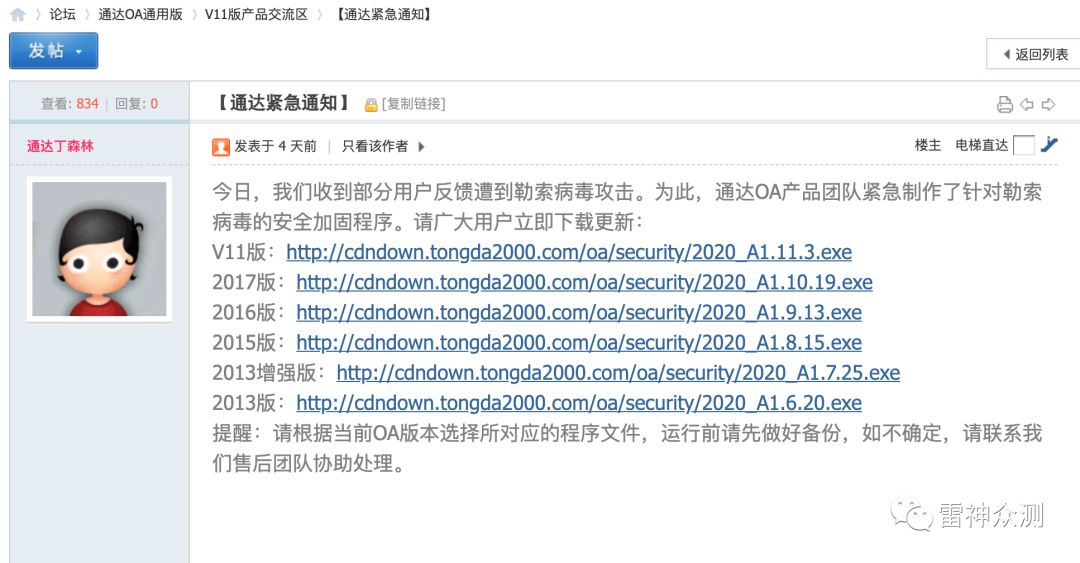可以将文章内容翻译成中文,广告屏蔽插件可能会导致该功能失效(如失效,请关闭广告屏蔽插件后再试):
问题:
I am developing a sample app.I am able to show alert on button click having some tittle and button .But now I want to show a pop up window having username (Label) and text field (Edit field) and a button.
on click on button.can I make another popup xml file for that ?
public void selfDestruct(View view) {
// Kabloey
Log.d("Naveen", "Test====");
System.out.println("----------------------ghfgjhf-----------------");
AlertDialog alertDialog = new AlertDialog.Builder(SecondActivity.this).create();
alertDialog.setTitle("Reset...");
alertDialog.setMessage("R u sure?");
alertDialog.setButton("OK", new DialogInterface.OnClickListener() {
public void onClick(DialogInterface dialog, int which) {
//here you can add functions
} });
alertDialog.show();
}
<Button
android:layout_height="wrap_content"
android:layout_width="wrap_content"
android:text="@string/self_destruct"
android:onClick="selfDestruct" />
回答1:
custom_dialog.xml
<?xml version="1.0" encoding="utf-8"?>
<LinearLayout xmlns:android="http://schemas.android.com/apk/res/android"
android:layout_width="fill_parent"
android:layout_height="fill_parent"
android:orientation="vertical" >
<EditText
android:id="@+id/editText"
android:hint="Enter some thing"
android:layout_width="wrap_content"
android:layout_height="wrap_content" >
<requestFocus />
</EditText>
<LinearLayout
android:layout_width="fill_parent"
android:layout_height="wrap_content"
android:orientation="horizontal"
android:layout_marginTop="10dp">
<Button
android:id="@+id/save"
android:layout_marginTop="15dp"
android:layout_weight="1"
android:layout_width="fill_parent"
android:layout_height="wrap_content"
android:text="SAVE" />
<Button
android:id="@+id/cancel"
android:layout_marginTop="15dp"
android:layout_weight="1"
android:layout_width="fill_parent"
android:layout_height="wrap_content"
android:text="Cancel" />
</LinearLayout>
</LinearLayout>
Need to inflate custom_dialog.xml
final Dialog dialog = new Dialog(this);
dialog.setContentView(R.layout.custom_dialog);
dialog.setTitle("Custom Alert Dialog");
final EditText editText = (EditText) dialog.findViewById(R.id.editText);
Button btnSave = (Button) dialog.findViewById(R.id.save);
Button btnCancel = (Button) dialog.findViewById(R.id.cancel);
dialog.show();
回答2:
You can make a normal activity and set the android:theme to dialog:
<activity
android:name="com.example.carsharingkitdemo.YourPopUpActivity"
android:theme="@android:style/Theme.Holo.Dialog" >
</activity>
and in your xml file for this activity you can decide the height and width of this dialog field. For example:
<RelativeLayout xmlns:android="http://schemas.android.com/apk/res/android"
xmlns:tools="http://schemas.android.com/tools"
android:layout_width="300dp"
android:layout_height="100dp">
The important thing is the manifest part.
回答3:
Try to use: PopupWindow
You can find example here: http://android-er.blogspot.co.il/2012/03/example-of-using-popupwindow.html
回答4:
you can use Dialog , like this code :
final Dialog dialog = new Dialog(context);
// dialog.requestWindowFeature(Window.FEATURE_NO_TITLE);
dialog.setContentView(R.layout.custom);
dialog.setTitle("Title...");
// set the custom dialog components - text, image and button
TextView text = (TextView) dialog.findViewById(R.id.text);
text.setText("Android custom dialog example!");
Button dialogButton = (Button) dialog.findViewById(R.id.dialogButtonOK);
// if button is clicked, close the custom dialog
dialogButton.setOnClickListener(new OnClickListener() {
@Override
public void onClick(View v) {
dialog.dismiss();
}
});
dialog.show();
if you want to remove title bar just use this code after define :
dialog.requestWindowFeature(Window.FEATURE_NO_TITLE);
回答5:
Try this...
AlertDialog.Builder builder = new AlertDialog.Builder(this);
builder.setTitle("Reset...").setView(editText)
.setMessage("R u sure?").setCancelable(true)
.setPositiveButton("Yes", new DialogInterface.OnClickListener() {
@Override
public void onClick(DialogInterface dialog, int arg1) {
//Do here whatever.....
}
});
AlertDialog alert = builder.create();
alert.show();
}
回答6:
its working for me
Dialog m_dialog;
m_dialog = new Dialog(BusinessDetail.this);
m_dialog.requestWindowFeature(Window.FEATURE_NO_TITLE);
LayoutInflater m_inflater = LayoutInflater.from(BusinessDetail.this);
View m_view = m_inflater.inflate(R.layout.rateus_popup, null);
myPopLay = (LinearLayout) m_view.findViewById(R.id.myPopLay);
m_dialog.setContentView(m_view);
m_dialog.show();
回答7:
Here is xml code and activity code see it.
<?xml version="1.0" encoding="utf-8"?>
<RelativeLayout xmlns:android="http://schemas.android.com/apk/res/android"
android:layout_width="fill_parent"
android:layout_height="fill_parent"
android:orientation="vertical" >
<TextView
android:id="@+id/text"
android:layout_width="wrap_content"
android:layout_height="wrap_content"
android:layout_alignParentTop="true"
android:layout_centerHorizontal="true"
android:layout_marginTop="56dp"
android:text="Popup Window will display on this Activity" />
<Button
android:id="@+id/popupbutton"
android:layout_width="wrap_content"
android:layout_height="wrap_content"
android:layout_centerHorizontal="true"
android:layout_centerVertical="true"
android:text="Show Popup" />
</RelativeLayout>
Activity file
package com.nkm.popup;
import android.app.Activity;
import android.os.Bundle;
import android.view.View;
import android.view.View.OnClickListener;
import android.view.ViewGroup.LayoutParams;
import android.widget.Button;
import android.widget.LinearLayout;
import android.widget.PopupWindow;
import android.widget.TextView;
public class PopupDemoActivity extends Activity implements OnClickListener {
LinearLayout layoutOfPopup;
PopupWindow popupMessage;
Button popupButton, insidePopupButton;
TextView popupText;
@Override
public void onCreate(Bundle savedInstanceState) {
super.onCreate(savedInstanceState);
setContentView(R.layout.main);
init();
popupInit();
}
public void init() {
popupButton = (Button) findViewById(R.id.popupbutton);
popupText = new TextView(this);
insidePopupButton = new Button(this);
layoutOfPopup = new LinearLayout(this);
insidePopupButton.setText("OK");
popupText.setText("This is Popup Window.press OK to dismiss it.");
popupText.setPadding(0, 0, 0, 20);
layoutOfPopup.setOrientation(1);
layoutOfPopup.addView(popupText);
layoutOfPopup.addView(insidePopupButton);
}
public void popupInit() {
popupButton.setOnClickListener(this);
insidePopupButton.setOnClickListener(this);
popupMessage = new PopupWindow(layoutOfPopup, LayoutParams.FILL_PARENT,
LayoutParams.WRAP_CONTENT);
popupMessage.setContentView(layoutOfPopup);
}
@Override
public void onClick(View v) {
if (v.getId() == R.id.popupbutton) {
popupMessage.showAsDropDown(popupButton, 0, 0);
}
else {
popupMessage.dismiss();
}
}
}
回答8:
Use the below coding to display a Pop up in android.
AlertDialog.builder builder=new AlertDilaog.Builder(this);
builder.setMessage("PopUP Example");
AlertDialog alert=builder.create();
alert.setTitle("");
alert.show();
new Handler.postDelayed(new Runnable()
{
@override
public void run()
{
//TODO
alert.dismiss();
}
},1*1000);
}
Youtube link: https://www.youtube.com/watch?v=SEsVTTl6exg
回答9:
We will use the PopupWindow class to create the popup.
One thing I would like to mention is that we want the popup to be attached to the button that opened it. For example if the “Show Popup” button from the screenshot above would be positioned in the middle of the screen, we want the popup window stick to the button’s position. To achieve this, first we should get the button’s “x” and “y” position on the screen, and pass them to the popup window. Then will we use an offset to align the popup properly – a bit to the right, and a bit down, so it won’t overlap the whole button.
Another think I would like to mention is that we will use a 9 patch background image for the popup, so it will look more fancy. But of course you can skip it and put any background you want, or no background at all.
Create layout/main.xml file and add a button:
<?xml version="1.0" encoding="utf-8"?>
<LinearLayout xmlns:android="http://schemas.android.com/apk/res/android"
android:layout_width="fill_parent"
android:layout_height="fill_parent"
android:background="#CCC"
android:orientation="vertical" >
<Button
android:id="@+id/show_popup"
android:layout_width="wrap_content"
android:layout_height="wrap_content"
android:text="Show Popup" />
</LinearLayout>
Create a new layout file: layout/popup_layout.xml that defines the layout of popup.
<?xml version="1.0" encoding="utf-8"?>
<LinearLayout xmlns:android="http://schemas.android.com/apk/res/android"
android:layout_width="wrap_content"
android:id="@+id/popup"
android:layout_height="wrap_content"
android:background="@drawable/popup_bg"
android:orientation="vertical" >
<TextView
android:id="@+id/textView1"
android:layout_width="wrap_content"
android:layout_height="wrap_content"
android:text="Popup"
android:textAppearance="?android:attr/textAppearanceLarge" />
<TextView
android:id="@+id/textView2"
android:layout_marginTop="5dp"
android:layout_width="wrap_content"
android:layout_height="wrap_content"
android:text="This is a simple popup" />
<Button
android:id="@+id/close"
android:layout_marginTop="10dp"
android:layout_gravity="center_horizontal"
android:layout_width="wrap_content"
android:layout_height="wrap_content"
android:text="Close" />
</LinearLayout>
And now the most interesting part. Open the TestPopupActivity and fill it with below code. Carefully read the comments to understand what’s going on.
public class TestPopupActivity extends Activity {
//The "x" and "y" position of the "Show Button" on screen.
Point p;
@Override
public void onCreate(Bundle savedInstanceState) {
super.onCreate(savedInstanceState);
setContentView(R.layout.main);
Button btn_show = (Button) findViewById(R.id.show_popup);
btn_show.setOnClickListener(new OnClickListener() {
@Override
public void onClick(View arg0) {
//Open popup window
if (p != null)
showPopup(TestPopupActivity.this, p);
}
});
}
// Get the x and y position after the button is draw on screen
// (It's important to note that we can't get the position in the onCreate(),
// because at that stage most probably the view isn't drawn yet, so it will return (0, 0))
@Override
public void onWindowFocusChanged(boolean hasFocus) {
int[] location = new int[2];
Button button = (Button) findViewById(R.id.show_popup);
// Get the x, y location and store it in the location[] array
// location[0] = x, location[1] = y.
button.getLocationOnScreen(location);
//Initialize the Point with x, and y positions
p = new Point();
p.x = location[0];
p.y = location[1];
}
// The method that displays the popup.
private void showPopup(final Activity context, Point p) {
int popupWidth = 200;
int popupHeight = 150;
// Inflate the popup_layout.xml
LinearLayout viewGroup = (LinearLayout) context.findViewById(R.id.popup);
LayoutInflater layoutInflater = (LayoutInflater) context
.getSystemService(Context.LAYOUT_INFLATER_SERVICE);
View layout = layoutInflater.inflate(R.layout.popup_layout, viewGroup);
// Creating the PopupWindow
final PopupWindow popup = new PopupWindow(context);
popup.setContentView(layout);
popup.setWidth(popupWidth);
popup.setHeight(popupHeight);
popup.setFocusable(true);
// Some offset to align the popup a bit to the right, and a bit down, relative to button's position.
int OFFSET_X = 30;
int OFFSET_Y = 30;
// Clear the default translucent background
popup.setBackgroundDrawable(new BitmapDrawable());
// Displaying the popup at the specified location, + offsets.
popup.showAtLocation(layout, Gravity.NO_GRAVITY, p.x + OFFSET_X, p.y + OFFSET_Y);
// Getting a reference to Close button, and close the popup when clicked.
Button close = (Button) layout.findViewById(R.id.close);
close.setOnClickListener(new OnClickListener() {
@Override
public void onClick(View v) {
popup.dismiss();
}
});
}
}




